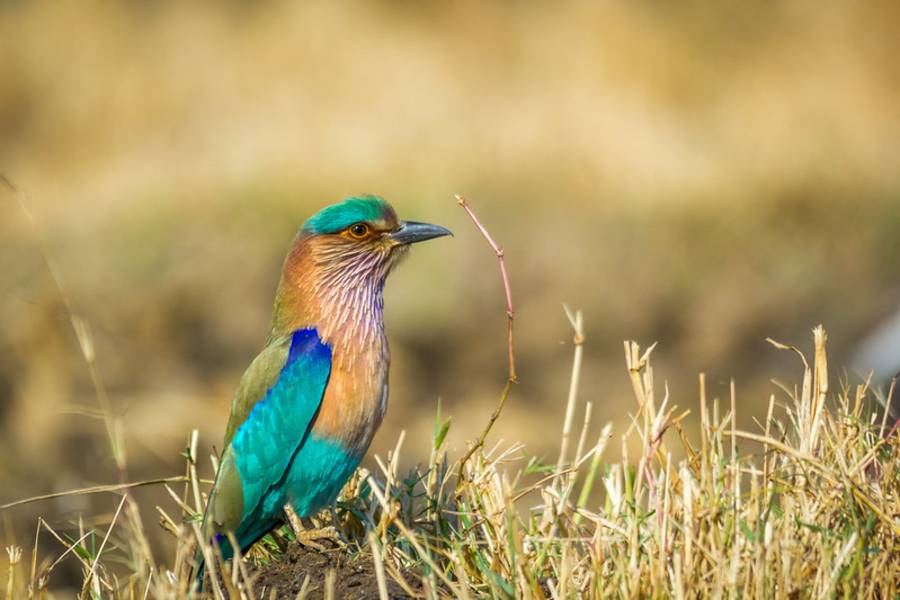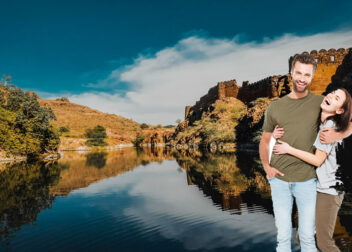Indian Wildlife Guide / Tips
Precautions
No wildlife journey is complete without sighting a delight of lions luxuriating down lazily inside the scorching sun. It is constantly critical to take precautions of never landing down out of your vehicle to snap close-up images in the wilds. It’s an absolute way of risking your life. Deal with the wild mammals using the respect that they deserve. Try not producing quick and fast actions and also any noises that really irritate these creatures. Try to be additional cautious in the event you see elephant turning towards you, flapping their ears, and erecting their trunks, it might be hazardous. Rhinos are the wild beast and recognized for their poor moods, disturbing their line of vision can provoke them to cost you down. You might have to get unique precautions whilst dealing with hippopotamus as it’s probably the most harmful wild animal amongst all-it is estimated that they kill more individuals than some other animal.
Take additional caution although generating your moves- your motion needs to be sluggish and peaceful. Put on healthy colors and unscented lotions, so that may properly merge with the forest woods.
Some sighting places have on-site employees and wildlife specialists. Don’t be afraid to ask for guidance.
Don’t try to share your food using the animals, let them take pleasure in their healthy meals, otherwise they may possibly lose their concern about cars, campers, or even poachers.
Discover to establish a symbol of alarm, these are occasionally discriminating, depart the place immediately if any animal reveals them.
Essential Skills
Knowing the feeding habits of these wild habitats will aid you to locate them in their natural habitat. Be respectful of nesting regions and vegetated grounds. Look for animal sign- marks inside the mud or snow, odd odor, and flora that has been freshly riffle are all evidenced that wildlife has been inside the region.
Essentially the most necessary skills in the wildlife images safari excursions are to “be patient” don’t anticipate the wildlife to cooperate all of the time. Permit yourself enough time within the wild, exactly where wild existence is copious, it could get many years, if not a lifetime, to determine all of the species listed on this guide and to shop a few in your cam.
Discover the skill of photographing the wildlife species from a correct distance. Attempt to photograph small animals from a minimal digicam position to emphasize their size, when you go for close-up photography of wildlife, try with a lengthy lens adjusting the digital camera at f8 and give attention to the animal’s eyes. A lens of 300mm in focal length is quite suitable for mammal images and for birds 500mm is really a great starting stage.
Gear Up
Binoculars are 1 of your critical gears up inside a wildlife safari tour, actually, each person inside the safari tour really should carry their binoculars along with them since the likelihood of sighting wildlife raises additional with it. Also, it is far better to take along a compact, digital, transportable digital camera than relying on a digicam with a movie. Having a topographic map, compass, GPS unit, or just being attentive to the jungle guidelines, will likely be of fantastic aid to you.
A powerful, lightweight flashlight with a red lens is a must for nighttime viewing, as it will not scare wildlife exactly whereas the brilliant mind of a white beam will demolish your evening visibility.
India is known for its rich wildlife, making it one of the best destinations for nature lovers. The country is blessed with a vast variety of flora and fauna that attracts visitors from all over the world. From Bengal Tigers to Indian Rhinoceroses, India has an incredible range of wildlife that you wouldn’t want to miss.
If you’re planning to explore the wildlife in India, there are a few things you should keep in mind. Here is an Indian wildlife guide that will help you make the most of your adventure:
- Know the Best Time to Visit
The best time to visit India for wildlife is from October to June. During these months, the weather is ideal for exploring wildlife parks and sanctuaries. However, the peak season is from November to February, so expect higher prices and larger crowds during this period.
- Choose the Right Wildlife Destination
India is home to a vast number of wildlife destinations. Each of these parks and sanctuaries has its unique flora and fauna, making each destination worth exploring. Some of the popular wildlife destinations in India include Ranthambore National Park, Corbett National Park, Kanha National Park, and Bandhavgarh National Park.
- Hire a Local Guide
To make the most of your wildlife experience in India, it is advisable to hire a local guide. A local guide is knowledgeable about the park or sanctuary you’re exploring and can help you spot wildlife easily. They also provide valuable insights into the local culture and history.
- Stay Alert
Wildlife in India is known for its unpredictability. So, it is essential to stay alert at all times. Avoid getting too close to the animals, and never try to feed them. It is also advisable to keep a safe distance from the animals while taking photographs.
- Respect the Wildlife and the Environment
The wildlife in India is an essential part of the country’s ecosystem, and it is crucial to respect and protect them. Avoid littering or damaging the natural habitat of the animals. It is also essential to follow the rules and regulations of the park or sanctuary you’re exploring.
In conclusion, India is an excellent destination for wildlife enthusiasts. With proper planning and preparation, you can explore the rich flora and fauna of the country and make unforgettable memories. So, pack your bags, grab your camera and set out on a wildlife adventure in India!



